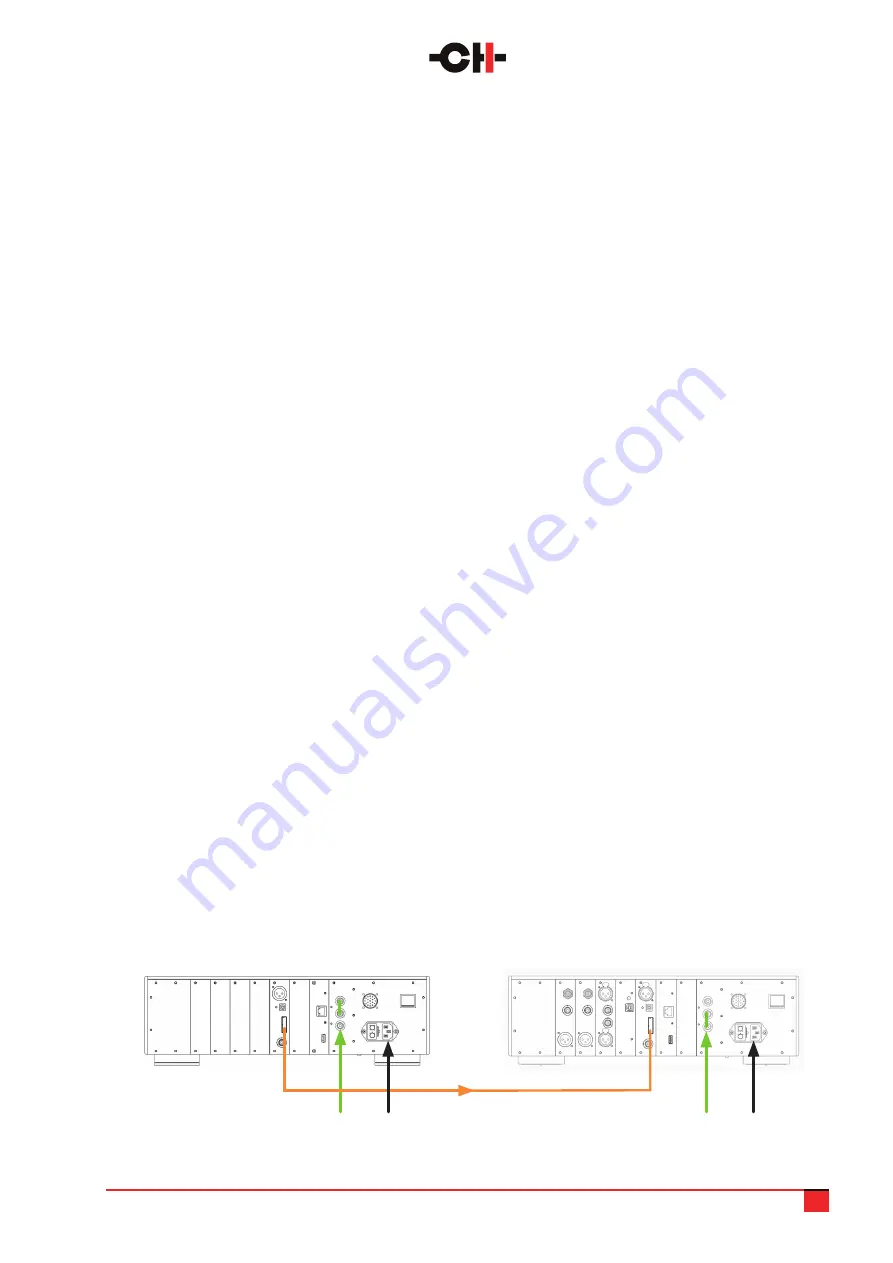
7 Advanced clocking
Many audio sources can be connected to the C1.2. Depending on their type, and your C1.2 options, different
clocking schemes might be used, but errors in clock priority/configuration will result in no sound, periodic
dropping of the signal or sub-optimal results.
Correct clock synchronization can make a huge difference to the musical results and communicative qualities
you obtain from digital sources and it is essential to take the time and care to get these set up parameters right.
Recommended use cases for various configurations are detailed in the following paragraphs. Even though this
chapter is quite technical, we kindly ask you to take the time to read it in order to get the best sound out of your
CH system. Do not hesitate to seek assistance from your authorized dealer, should you be unsure of the best
configuration for your setup.
7.1 General clocking considerations
In any configuration,
there must always be no more and no less than one clock master
(unless an asynchronous
sample rate converter isolates two clock masters). In the CH product range, the clock master is the unit clocked
on its own internal clock (clock source parameter is INTERNAL) or an external clock generator such as the T1. If
more than one clock master is used/designated, the system cannot synchronize (at some point a unit will display
CLOCKING ERR to let you know that the current clocking scheme is wrong). If the DAC is not working synchronously
to its source, its input buffer will get completely full (if the source is slightly faster than the DAC) or completely
empty (if the source is slightly slower than the DAC). Either situation will generate a CLOCKING ERR notification.
If there is no clock master, there will be no synchronization. This kind of system is not stable, and will either output
no sound, or lose lock after some time. If the configured clock source (e.g. SYNCHRO BNC 75
Ω
) is not connected or
has no synchronization signal, the C1.2 cannot lock (open padlock symbol displayed) and mutes its output.
If more than one clock master is used, the system will not be fully synchronized (at some point a unit will display
“CLOCKING ERR.”). If you don’t define a clock master, each unit gets synchronization from a unit that is itself a clock
slave, an arrangement that is not stable in terms of overall clocking. If the configured clock source (e.g. SYNCHRO
BNC 75 Ohm) is not connected or has no synchronization signal, the C1.2 cannot lock (the open padlock symbol will
be displayed) and mutes its output.
7.2 Without SYNC-I/O board
When a C1.2’s DIGITAL-IN HD inputs are used together with a CH D1.5 or D1 CD/SACD transport (or other standard
S/PDIF audio source) and no SYNC-I/O board is fitted, both audio data and clocking goes from the source to the
DAC. More precisely, clocking is sent with the audio stream. It is either carried on dedicated lines in the CH Link HD
(while audio data is carried on other lines in the same cable) or embedded in S/PDIF’s bi-phase modulated signal.
The schematic below shows the optimal way to connect such a system:
C1.2 User Manual
27
AC input
AC input
Ground link
Ground link
CH LINK HD
D1.5
C1.2
Simple D1.5 - C1.2
connection




























